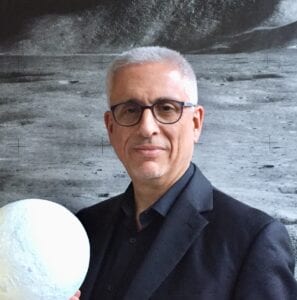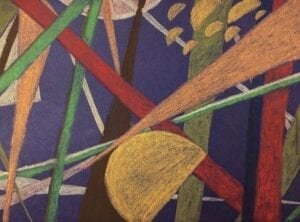by Luisa Low

During this week’s SpaceCafé, SpaceWatch.Global publisher Torsten Kriening spoke with self-confessed “spaceist”, astronautics and space engineering expert from the International Space University, Professor Chris Welch.
Now the Head of the Space Payloads Laboratory at the ISU, Professor Welch’s career in space engineering has spanned several decades across multiple universities and institutions. He was previously the Director of Kingston University’s Aerospace Research Centre, and began his academic career at Cranfield University and the University of Kent. He is also President-elected of the British Interplanetary Society and fellow at the Royal Astronomical Society. His research and teaching interests span space propulsion systems, orbit mechanics and space exploration and his contributions to the sector are award-winning. In 2009 he received the Sir Arthur Clarke Award in recognition of his work in space education and outreach.
There’s no doubt that Professor Welch is one of the most decorated space academics alive, but you may be surprised to learn that his interests go well beyond engineering: he is also a self-described ambassador and interlocutor for the arts and space. In this week’s episode, he and Torsten discuss space art’s history, its development and future.
So, what is space art?

Space has conjured our collective imagination since the dawn of humanity. From ancient astrology to Van Gogh’s Starry Night, it has been one of art’s most mystifying and evocative subjects. But since humanity entered space, the definition of space art has changed and developed beyond just interpretations of the sky. Space art has begun to exist in space too, such as the Voyager Golden Record, and more recently, NASA beaming The Beatles’ “Across the Universe” into deep space.
According to Professor Welch, art in space can really be any form of art that you could conceive on the ground. Its execution it can be as broad as art is in general, and can be painting, illustration, sculpture, music, literature, architecture, performance, and even protest art. The category also includes artistic interpretations of space, space hardware and infrastructure designed with aesthetics in mind, as well as art made to be executed in space.
Enter art in space
Art in space – as opposed to space art – has expanded as a category in recent years, with Professor Welch involved in several projects to send Earth-made artworks into space.
“There have been sculptures taken to the space station. Recently, the CEO of Rocket Lab, Peter Beck, flew his humanity star orbiting sculpture, which created a lot of attention”, said Professor Welch.
However, perhaps the most intriguing art project Professor Welch has been directly involved in is sending a 10cm3 “interactive microgravity kaleidoscope” into space. Designed to inspire people back on earth, the Hydra relies on the touch of an earth-based finger and human pulse to light up and operate.
“The [kaleidoscope] is actuated from the ground by somebody putting their finger on a pulse sensor, and then this pulse – which is encoded – is transmitted up to the space station, causing it to operate.”
A video of the kaleidoscope rotating is then sent back down to Earth in near-real time and is presented on a screen.
“This allows somebody to control and interact with something in space by putting their finger on a sensor.”
The kaleidoscope’s exterior also features a “very long, thin” poem, written especially by Professor Welch.
Why do we need art in space?
This question, Professor Welch says, is simply a specialised variation of “why do we need art?”.
To understand why there is art in space, he believes we need to understand that art and culture have always gone wherever human beings go – and from the 20th century onwards, that also means space.
He also believes that art and science have long represented humanity at its most heightened, expressed perhaps most eloquently by Chancellor of the International Space University, Arthur C. Clarke, in his 1962 book “Profiles of the Future”, who said that the only human activities that really mean anything are the search for knowledge and the creation of beauty. And that’s something we think scientists, engineers, musicians and artists can all finally agree on.
To listen to Chris Welch’s insights into the space industry, you can watch the full program here:
Space Cafe is broadcast live each Tuesday at 4 pm CEST. To subscribe and get the latest on the space industry from world-leading experts visit – click here.
*Luisa Low is a freelance journalist and media adviser from Sydney, Australia. She currently manages Media and Public Relations for the University of Sydney’s Faculty of Engineering.





